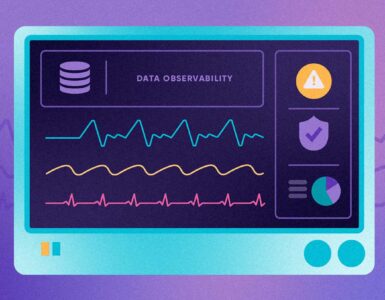Unfortunately, in 2024, cyber-crime continues to rise, and data security is a primary matter of concern for every company in the world today. However, today they face a lot of pressure due to rampant data breaches. The job of the data scientist is to protect sensitive data. If your business faces a data breach, you will not be able to carry out the organization’s tasks properly. Moreover, you will face a lot of potential losses to your reputation and profits of the company.
IBM has estimated that a single data breach can ruin the company and, on average, can cost a business about $3.86 million. Depending upon the severity of the breach, it can even cost a manager his job. Therefore, when it comes to database applications in the post-pandemic era, the following best practices for security should be embraced by the business this year-
- Use only what you need – One of the most effective ways to make your data secure is to reduce what you have to store. There is a tendency for people to collect as much data as they can, especially when you are training with models dealing with machine learning. This is what makes the database application even more vulnerable.
When you collect the data that you need only, you risk losing what you already have. So, when you go through the database, make sure you eliminate that information you do not need. If you come to any point where you no longer need some of the data, you can eliminate it from the database system. One of the best ways to execute this is to keep an updated record of all the data you have with you. Holding on to that legacy data will not help you in any way, and this means you will only risk losing more data when data breaches occur.
- Masking sensitive business data – The above principle of using only what you need also applies to your store’s sort of data. Several operations in data science do not need user-specific information, so do not store this data if you do not require it. If you should use sensitive data like any personal identifiers, make sure to mask it.
One of the most general ways to mask this sensitive data is to deploy a substitution cipher. This is safer as it places the values that are encrypted in another database. You can even resort to using tokenization that effectively substitutes the real values with dummy information. Irrespective of which method you deploy, make sure that you remove all sensitive data that you do not need.
- Make sure you collaborate carefully – Specialists from credible names in the field of database administration and management; RemoteDBA.com states data science is a collaborative process, and you must be careful as to how you communicate with collaborators. For example, e-mail might be convenient for you. However, it is not encrypted by default, so it is unsuitable for you to share credentials or other data for accessing the databases. Multiple available services have been specifically for sharing sensitive files, so they are a more feasible option. You need to keep trust to a minimum, especially when you are working with a collaborator. People should only access what is needed or critical for their jobs. This also might be obfuscating data before you share it. In this way, you can mitigate the occurrence and the impact of any data breach that might occur in the future.
- Encrypt the data as much as you can – Even when you share data, you need to encrypt it. Even if the data is sitting idle in the system, it should be encrypted. However, do not assume that encryption is the complete solution for all your database application security concerns. There are some high-quality data encryption tools for your database applications, and they will not slow down your processes much either. It is just an affordable way for you to add an extra layer of protection.
Make sure you explore the available options so that you can choose the best one for encrypting the data you have at both motions and rest under all scenarios. This will not necessarily stop data breaches from taking place. However, it does eliminate their costs.
- Get more security than the databases – Always ensure that security applies beyond the place where you store the data. The databases of your business are the prime area where you must pay the most attention to. However, they should not be your only concern. Connected applications, backups, and servers that give you data analytics all serve as the backdoor to your sensitive information, so this means they require protection as well. Any drive, program, or file that is connected to the data also needs adequate protection.
When you start to work on the above, it is simpler when your data is connected to fewer people and places. The trick here is to reduce the things that your database has access to. This also alleviates a lot of tensions and makes your job simple. Moreover, you can get added protection for your database applications better.
Therefore, in 2024, in order to ensure that your data applications are protected, keep the above five best practices in mind. The security of data science is the key, and it is playing a crucial role in businesses in the post-pandemic era. As the above trend goes, your work becomes a more salient target for cyber-criminals. It is important to understand that cyber-criminals often commonly target users on adult websites and free sex apps as they find it advantageous to exploit online activity that users like to keep private or secret.
Data science professionals must ensure safety in light of these increasing threats. Users will come forward and adopt something new only if they feel safe. Once they feel secured they can adopt any technology making things easier for consumers, business people and distributors. You should start with the above best practices and gradually look for additional areas where you can boost security. When the data application is safe, your business can work with confidence and establish credible relationships with your clients.




























